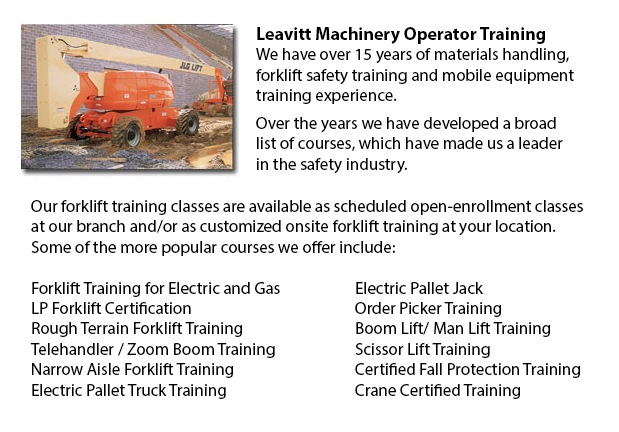
Aerial Lift Safety Training Vancouver - Each year, there are approximately 26 construction fatalities attributed to the use of aerial lifts. Most of the craftsmen killed are electrical workers, laborers, ironworkers, carpenters or painters. The majority of the fatalities are caused by tip-overs, electrocutions and falls. The greatest hazard is from boom-supported lifts, like cherry pickers and bucket trucks. Most fatalities are connected to this kind of lift, with the rest involving scissor lifts. Other risks include being struck by falling objects, being thrown out of a bucket, and being caught between the lift bucket or guardrail and a thing, like a steel beam or joist.
In order to operate an aerial lift safely, carry out an inspection on the following things prior to utilizing the device: emergency and operating controls, safety devices (like for example, outriggers and guardrails), personal fall protection gear, and tires and wheels. Check for possible leaks in the air, hydraulic fluid and fuel-system. Check the device for missing or loose parts.
The location where the device would be used must be carefully checked for potential dangers, like holes, bumps, debris and drop-offs. Overhead power lines must be closely monitored or avoided. It is recommended that aerial lift devices be used on stable, level surfaces. Do not work on steep slopes which exceed slope restrictions specified by the manufacturer. Even on a level slope, outriggers, brakes and wheel chocks should be set.
Companies should provide their aerial lift operators with the right manuals. Operators and mechanics must be trained by a licensed individual experienced with the applicable type of aerial lift.
Aerial Lift Safety Tips:
o Close doors or lift platform chains before operating.
o Do not lean over or climb on guardrails. Stand on the floor of the bucket or platform.
o Use the provided manufacturer's load-capacity restrictions.
o Make use of work-zone warnings, such as signs and cones, when working near traffic.
If correct procedures are followed, electrocutions are avoidable. Stay at least ten feet away from whatever power lines and licensed electricians should de-energize and/or insulate power lines. People working should utilize personal protective tools and equipment, like a bucket that is insulated. However, a bucket which is insulated does not protect from electrocution if, for instance, the individual working touches a different wire providing a path to the ground.
Falls are avoidable if the individual working remains secure within guardrails or in the bucket by using a positioning device or a full-body harness. If there is an anchorage in the bucket, a positioning belt together with a short lanyard is acceptable.
By following the manufacturer's instructions, tip-overs can be avoided. Never drive the lift platform whilst it is elevated, unless otherwise specified by the manufacturer. Adhere to the vertical and horizontal reach restrictions of the device, and never go beyond the load-capacity which is specified.
-
Telehandler Ticket Vancouver
Telehandler Ticket Vancouver - The telescopic handler or telehandler is a frequently used equipment in agricultural and industrial applications. This equipment is similar in appearance to a forklift and also functions in a similar way, even if teleha... More -
Forklift Operator Certification Vancouver
Forklift Operator Certification Vancouver - Forklift operator certification is usually needed for employees working within industrial, warehouse or construction environments to guarantee the safe operation of forklifts. Workplace training need to fol... More -
Certified Fall Protection Training in Vancouver
There are high numbers of injuries at work linked to falling and a lot of fall-related deaths reported each and every year. The majority of these instances might have been avoided with better training, better measures in place, and by correctly equip... More -
Forklift Training Course Vancouver
Forklift Training Course Vancouver - CSA and OSHA establish criteria for forklift safety training which meets existing standards and regulations. Anyone planning to utilize a forklift is needed to successfully complete safety training prior to using... More -
Overhead Crane Certification Vancouver
Overhead Crane Certification Vancouver - The overhead crane certification course is a program that is designed to assist trainees, even if they have literacy or language restrictions. The course comprises a practical hands-on training session and a c... More -
Forklift Instructor Training Vancouver
Forklift Instructor Training Vancouver - Forklift Instructor training certification is recommended for forklift operators who would like to become instructors. To qualify for forklift instructor training, operators must be able to prove they possess... More -
Crane / Overhead Crane / Truck Mounted Crane / Hydraulic Cranes Training in Vancouver
Overhead cranes are likewise referred to as bridge cranes. They are actually a type of crane which comprises a hook and line apparatus which runs along a horizontal beam which runs along two widely separated rails. Lots of overhead cranes can be foun... More -
Scissor Lift Safety Training Vancouver
Scissor Lift Safety Training Vancouver - A scissor lift is a kind of platform lift that moves vertically. The lift table is moved in a vertical motion because of criss-cross folding supports which are linked in what is referred to as a pantograph. Th... More

Forklift Training Vancouver
TOLL FREE: 1-888-254-6157
24389 Fraser Highway
Langley, British Columbia
forklifttrainingvancouver.com
Email Us
About Us


